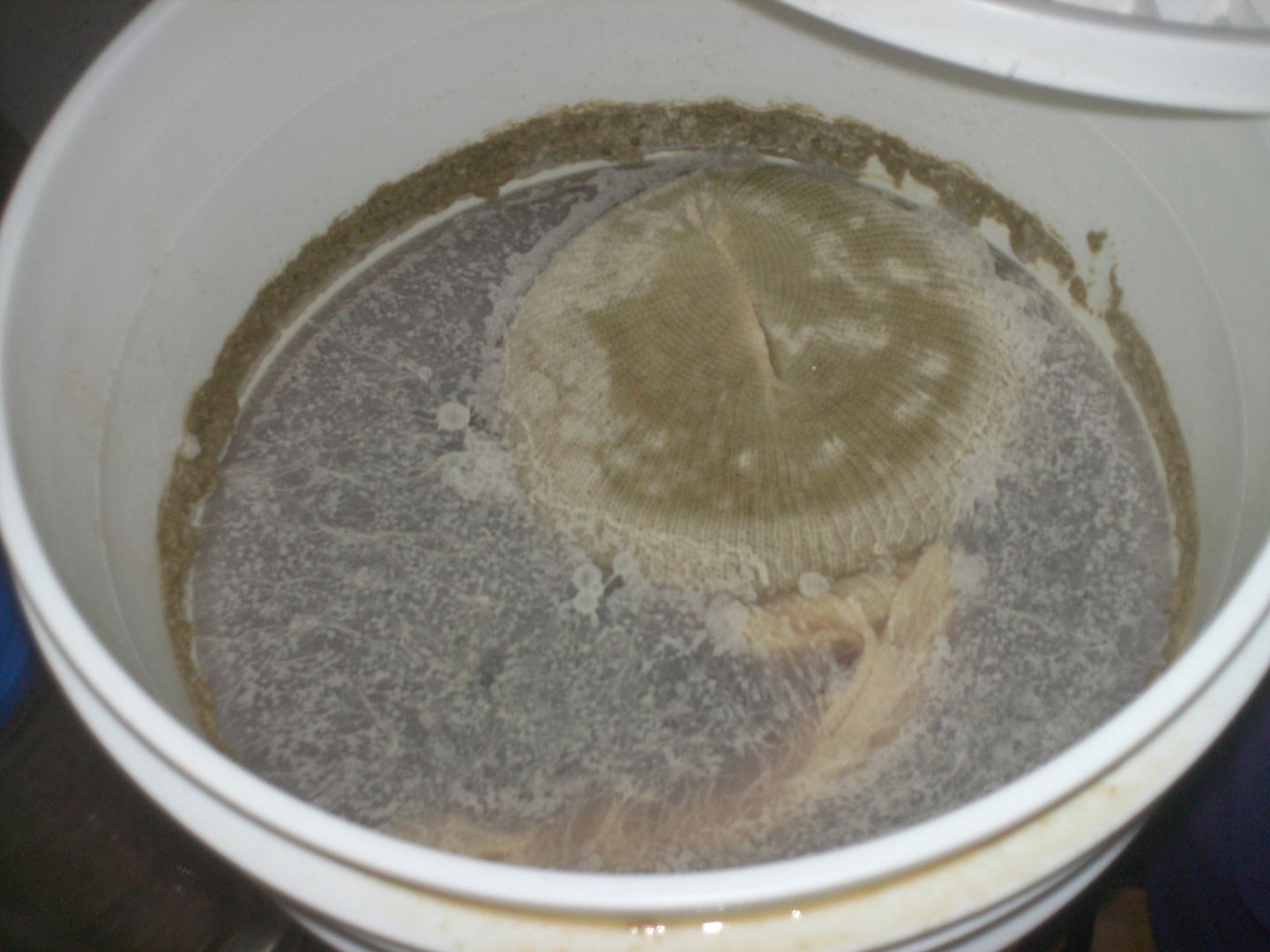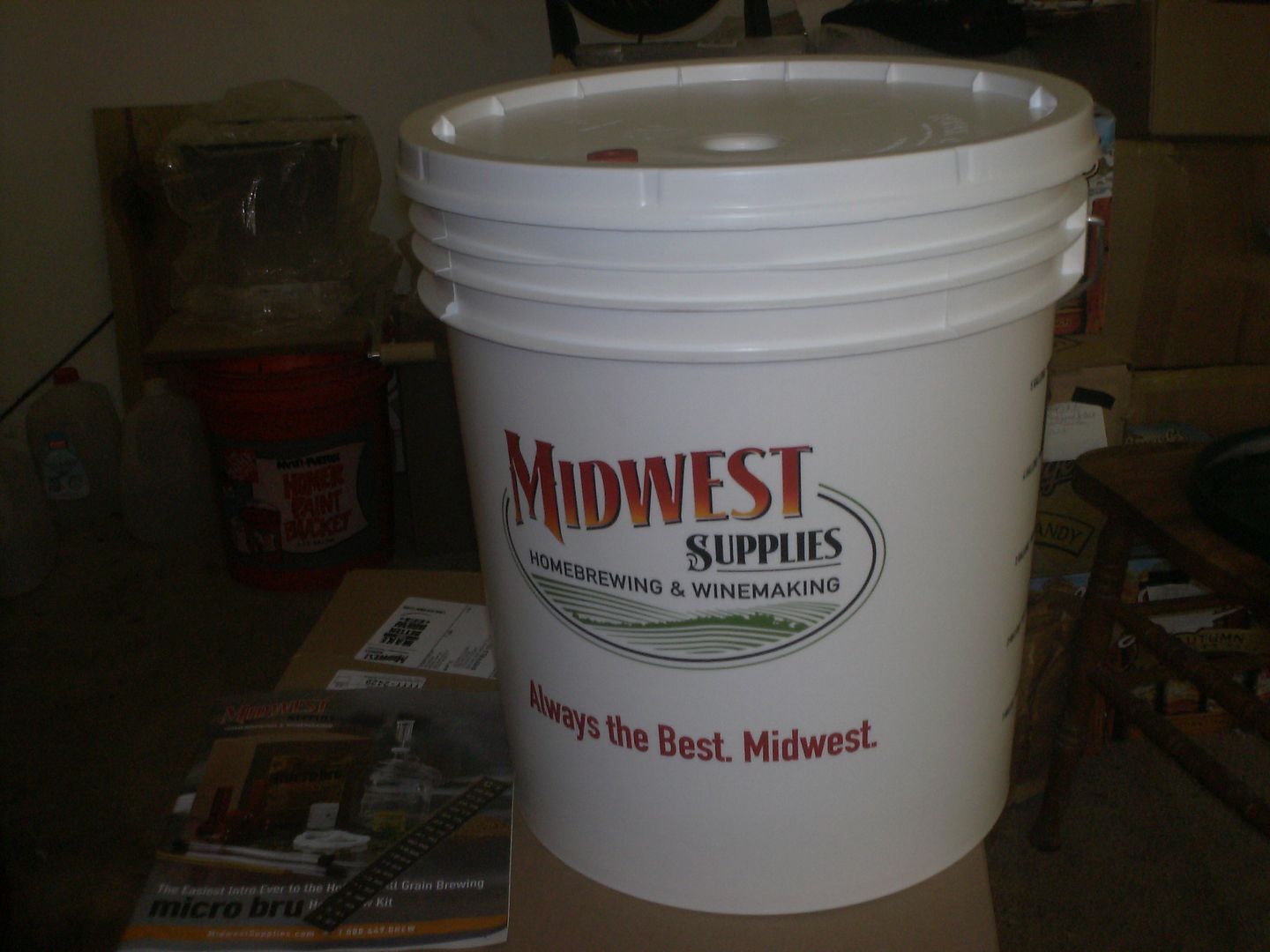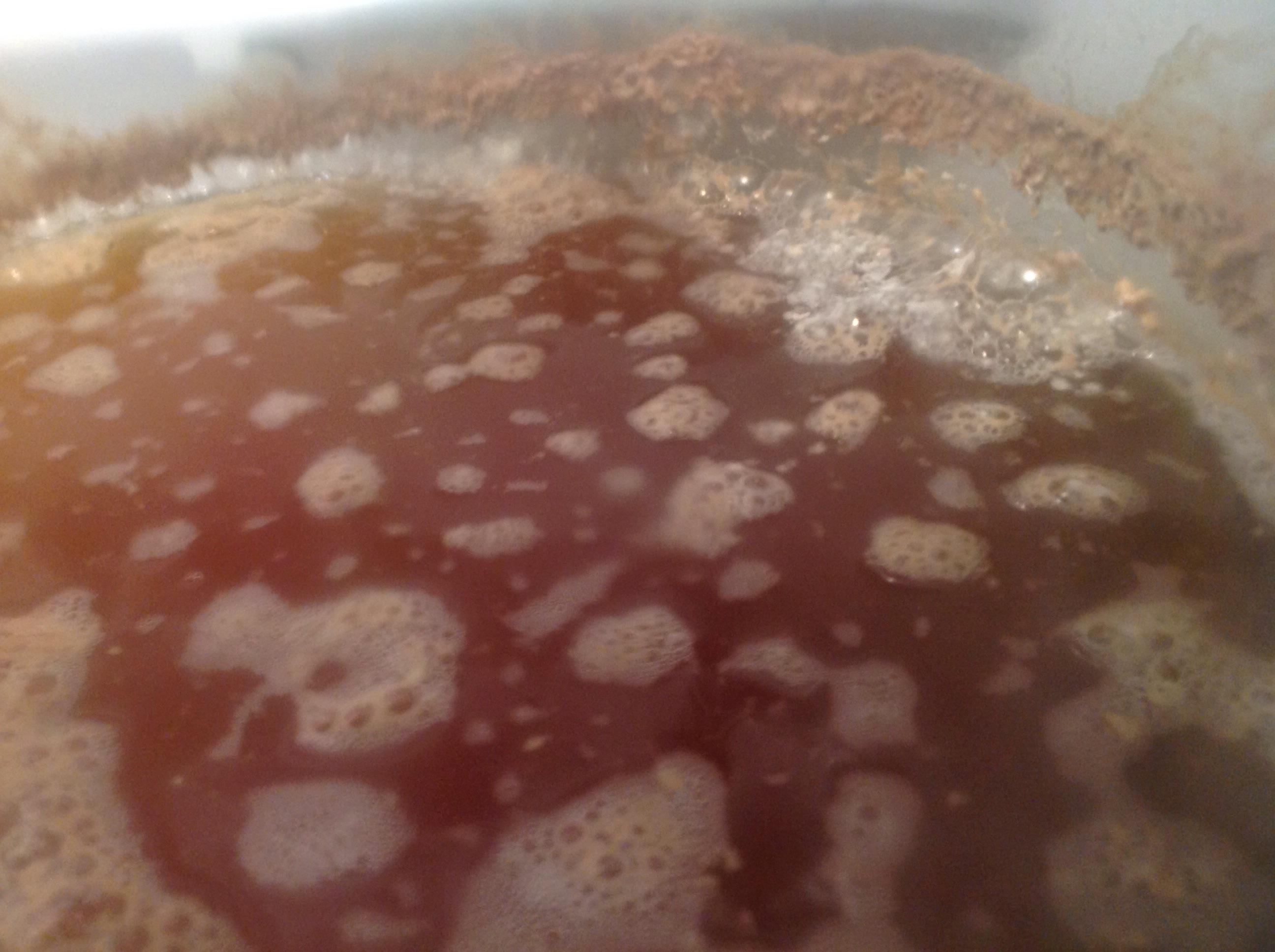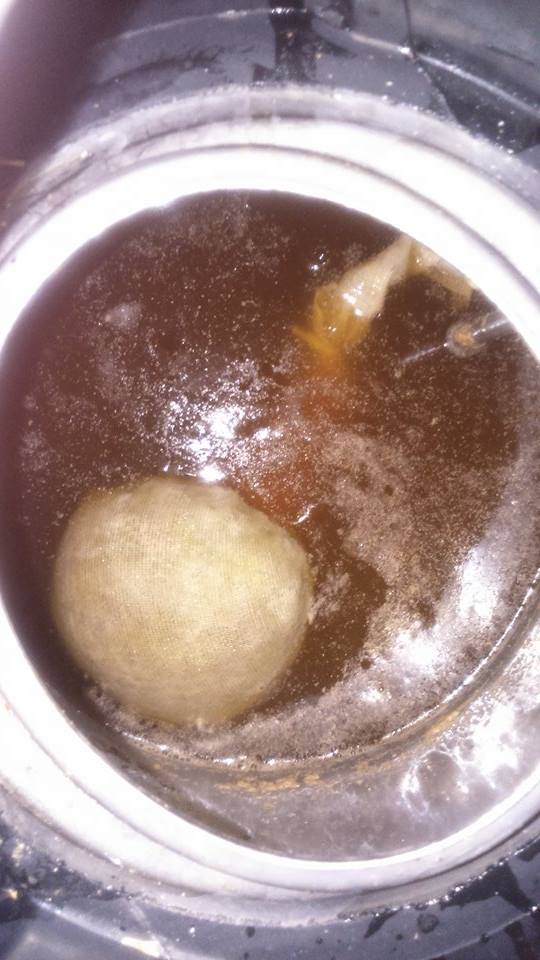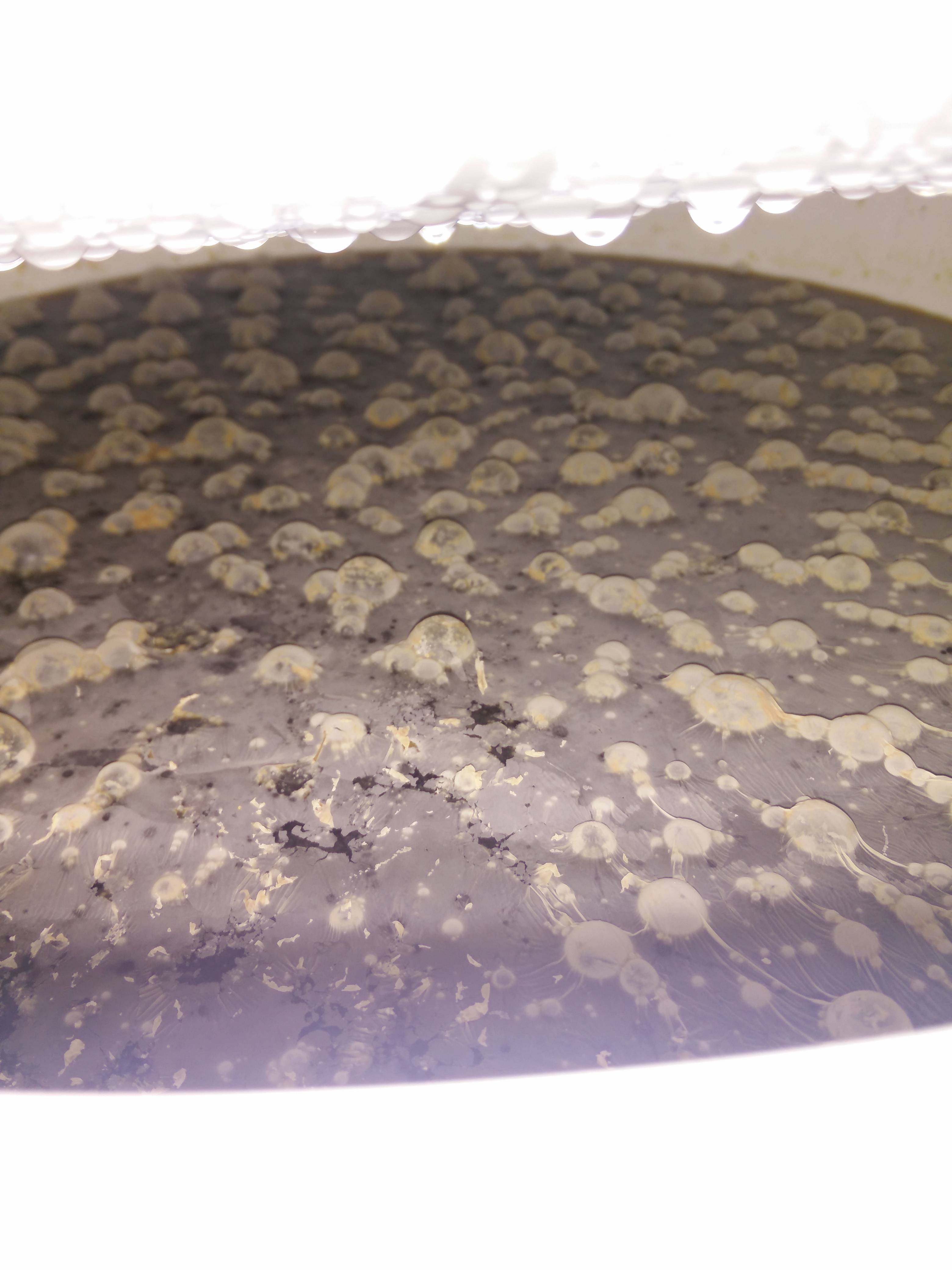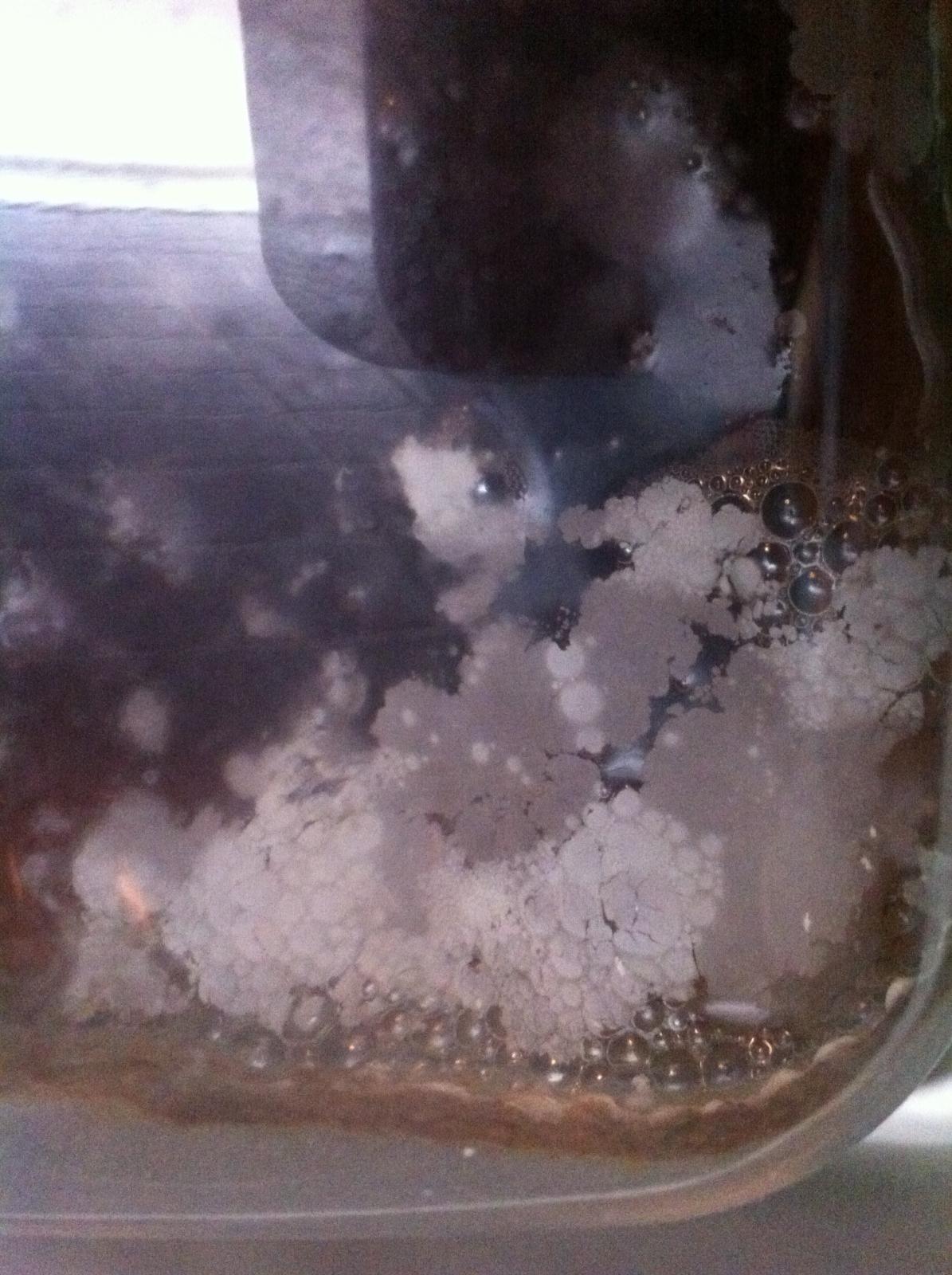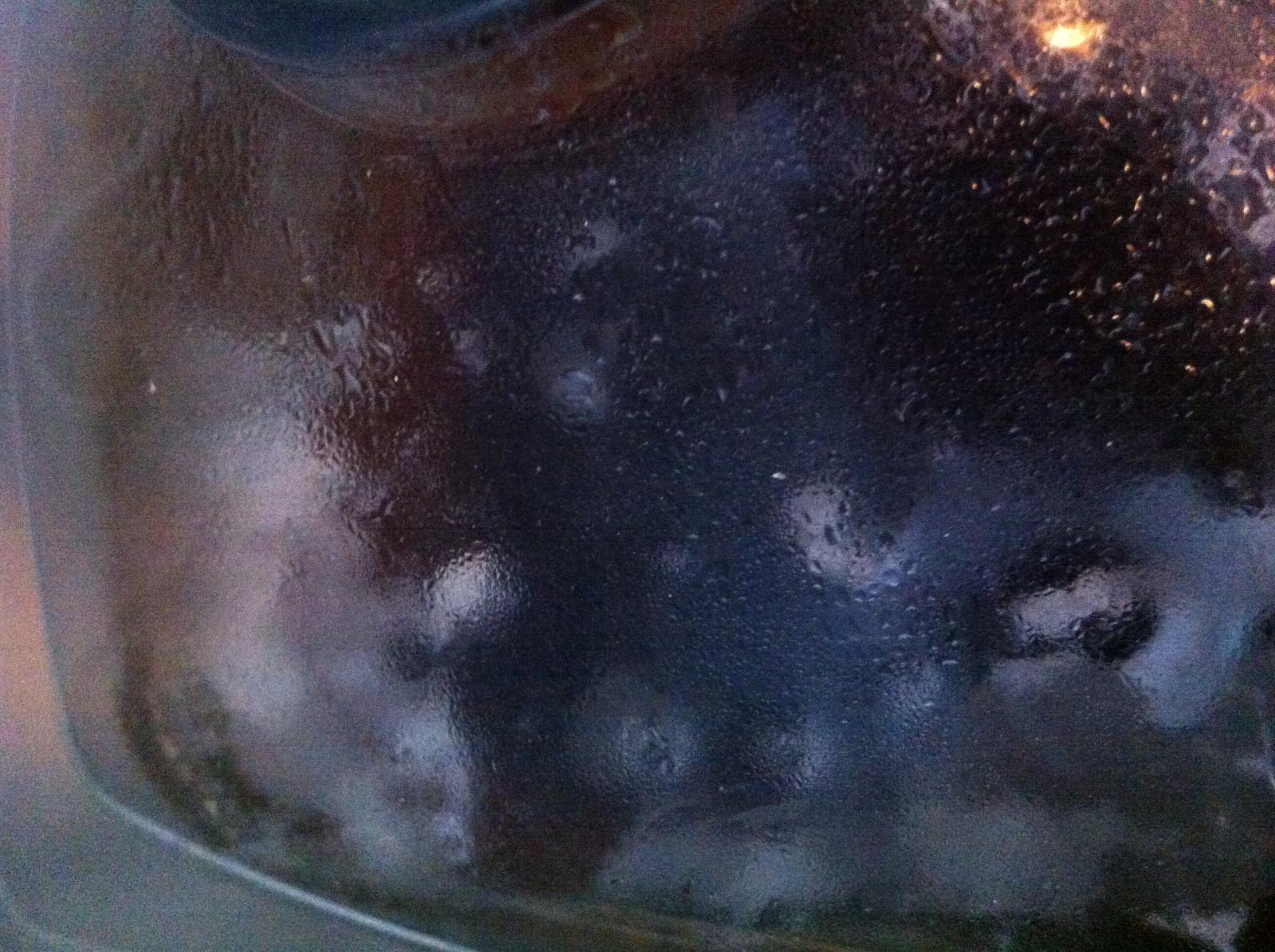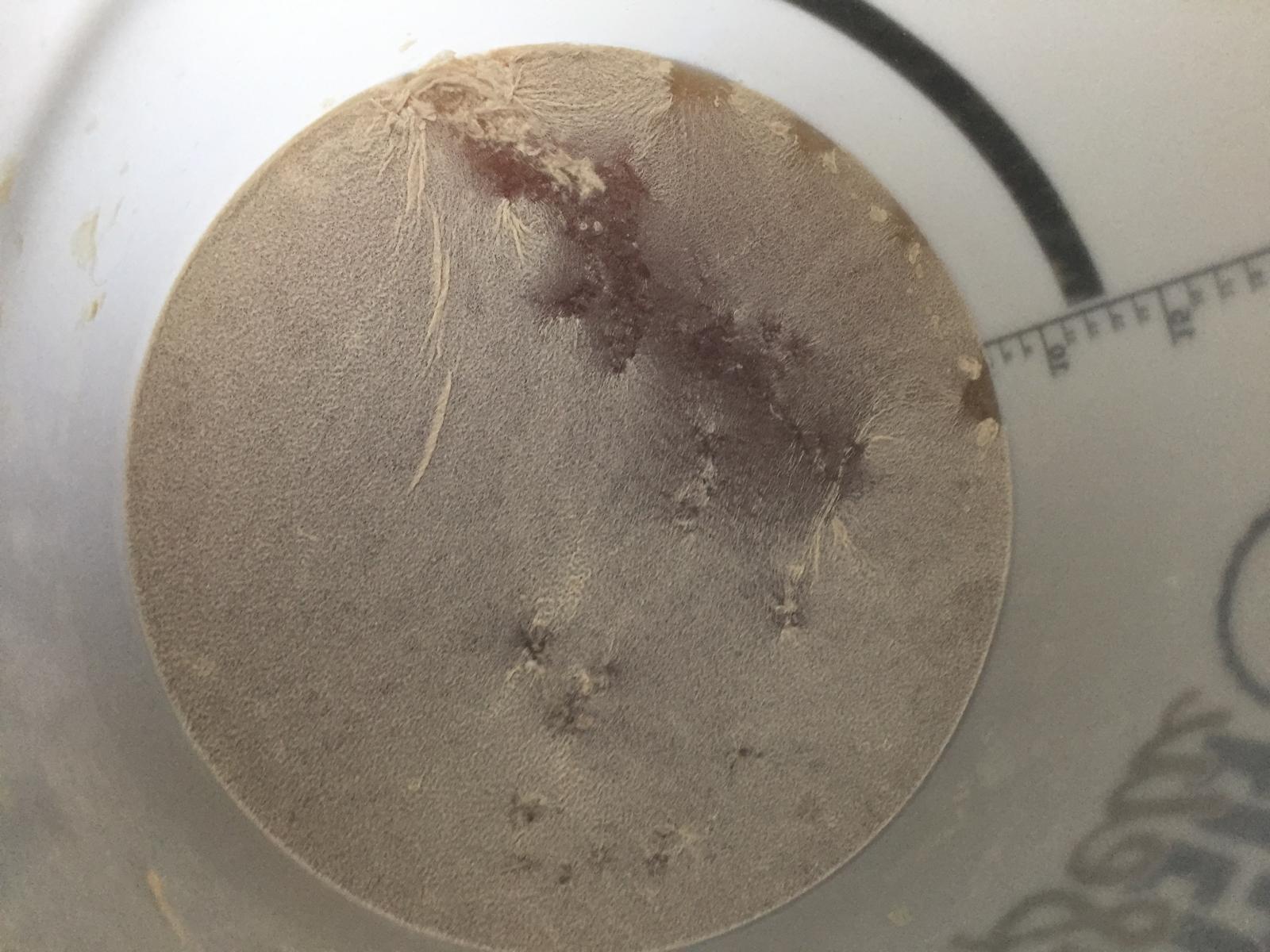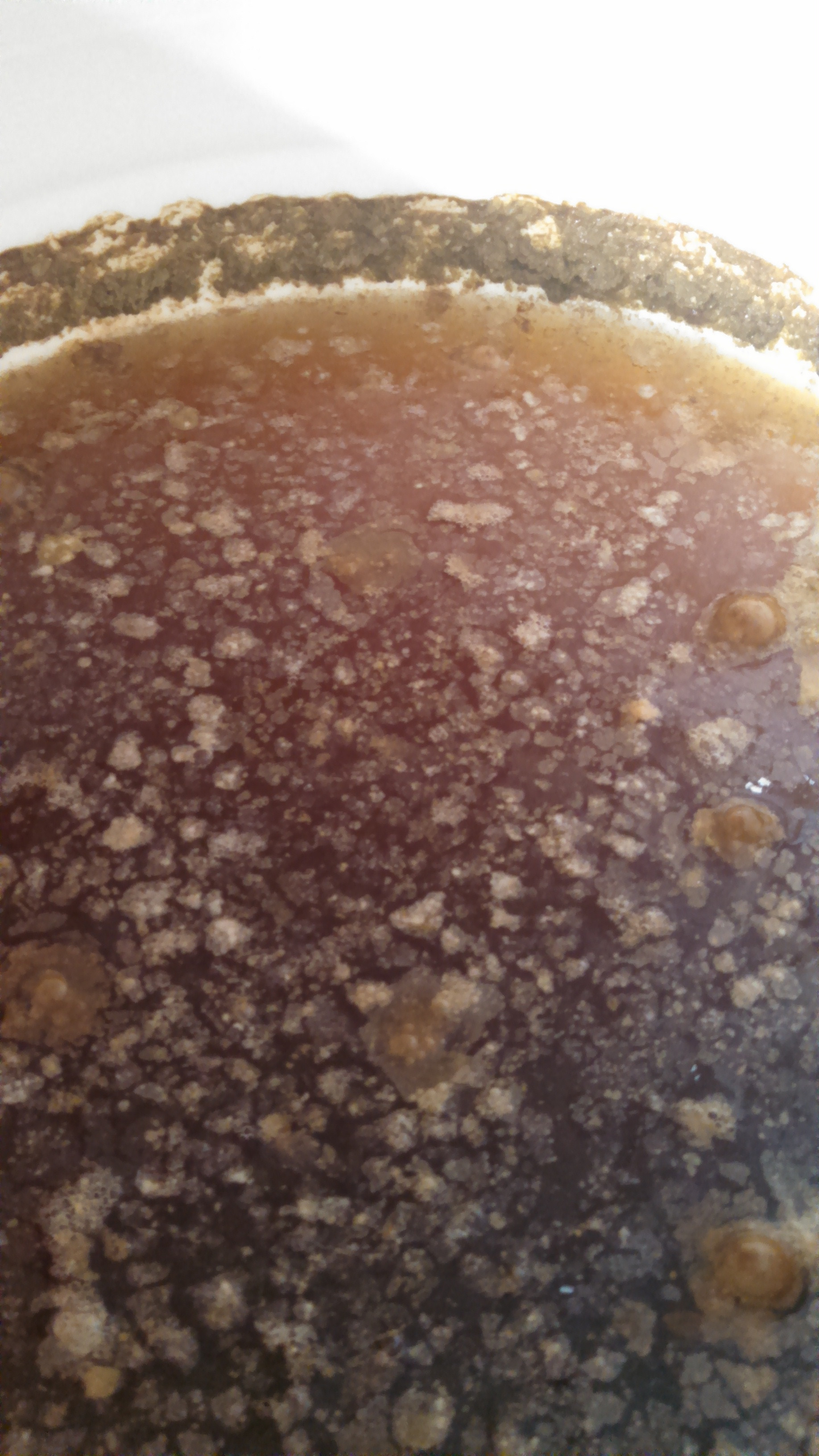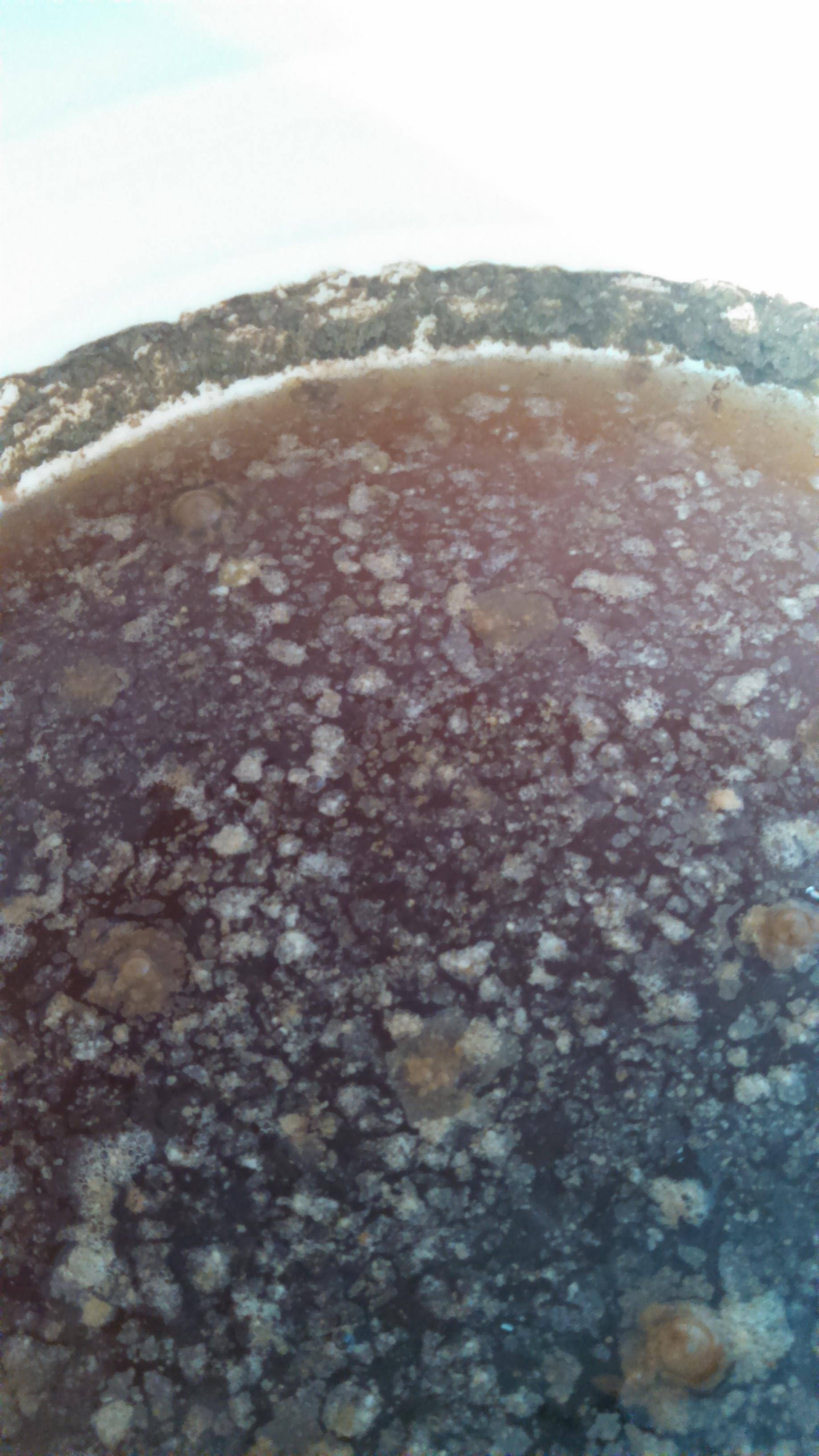I've spent the better part of a year battling this "house strain" of mold, so I've decided I'm going to stop brewing until I figure this one out.
I'm pretty sure this is the same infection as one in
the inaugural post of this thread, which talks about the flavor being "bitter but not hop bitter." When I've posted previous occurrences, folks have said it *looks* like lacto, but it has a shi**y bitterness and no sour taste.
I soak my carboys (Better bottles) in bleach solution, along with my auto-syphon, racking hose, aeration hoses, and thief. I rinse them out with hot water, and then sanitize them with Star-San. I boil my diffusion stone and then soak it in Star-San.
My solution for a long time was just to not open the damn thing for 10 days, then bottle whatever was there (it was usually all fermented by then). This meant no gravity tests, no racking to secondary, no dry-hopping. If the seal came off any time before bottling, that crud started growing and the batch was ready to feed to the fish. Whenever I bottled anything that did have crud growth, there was always a film at the top of the bottles and a very nasty bitterness. This last batch sat for three weeks without being opened and still went off, but I think the bung was a bit loose.
My theory has been that this stuff can't compete with yeast during active fermentation, because it doesn't show up until secondary or if there's been some sort of oxygen leak. All of my beers have had a faint mustiness that only I notice, which suggests to me that this thing has been there all along but can't grow if I keep the oxygen out. I have no idea if this is actually correct. I have never seen this infection take root after bottling if it wasn't already there when I bottled.
I plan to replace the carboys and use a new racking hose, auto-siphon, thief, diffusion stone, and aeration hose. It has also occurred to me that this could be coming from the wort chiller - I tend to do small batches and the coil does not get entirely immersed. Perhaps something is surviving in there despite me boiling the bottom half of the coil for 5 or 10 mins.
My only other thought is that this could somehow be airborne in the kitchen where I brew and the bathroom where I leave the carboys. This is perhaps a self-indulgent theory, as it would blame pesky floating spores rather than my own sanitation incompetence. If anyone's heard of the latter please let me know, as I'll probably have to settle for don't-open-the-damn-thing-and-put-up-with-the-musty-flavor approach, which I think I'd actually be OK with.
Thanks, Brian



